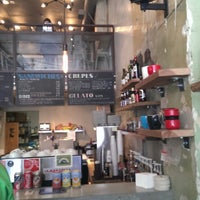

( Update: The agency released the Draft EIS on January 18th.) Chinatown-International District doesn’t have a preferred alternative yet, but one deep bore option is a whopping 190 feet deep.Ī fuller picture will emerge when Sound Transit releases its Draft Environmental Impact Statement (DEIS) for Ballard Link and West Seattle Link promised by January 28th, but the agency did reveal new morsels in presentations to its Community Advisory Groups over the past week.

Sound Transit’s preferred alignment for the next phase of light rail in Seattle includes a Westlake Station that is 135 feet deep, a Midtown Station that is 140 feet deep, a South Lake Union Station that is 120 feet deep, and a Delridge Station platform that is 85 feet in the air. (Image by Sound Transit) Reaching the station platform could take six minutes at the deepest stations. The larger context of the station is planned in concert with the respective cities.

So consider this a pupu platter of International District Chinese restaurant options: a few tastes before you dig deeper into the near-infinite menu.Sound Transit has big station decisions planned for 2022. “Regardless of any particular cuisine, being able to run a business for decades in this market, that’s to be celebrated,” says Chou. “There are different types of restaurants, and they will fulfill different types of needs, and the type of food that you want,” she says.Īny list of favorites can only barely scratch the surface of including every spot and style in the International District worth enjoying a meal at, especially when it comes to honoring the neighborhood's long history. Now, Chou relishes in the variety, and even resents the idea of picking favorites. The author of Vegetarian Chinese Soul Foodjokes that “Cashew chicken paid for my college education,” and notes that customers favored Americanized options and only tried the more traditional dishes her family cooked, like dry-fried string beans, when served buffet style. When Chou’s parents first moved to the US and opened a Chinese restaurant in 1980, traditional dishes didn’t sell. “That has opened up the access to these regional cuisines and ingredients, created a broader demand and customer base.” “What’s on TV, Tony Bourdain… even people on YouTube, broadcasting from wherever they are,” she says. It's a far cry from a generation ago, when most Americans outside the Chinese diaspora barely understood the difference between Americanized Chinese food and the cuisines of China.įood writer Hsiao-Ching credits more people traveling, or even exploring other cultures from their couches. Big-budget modern regional Chinese chain outlets share streets with old-school chop suey spots, and takeout dim-sum counters are interspersed with all-you-can-eat premium hot pot vendors. Like most North American cities these days, many of Seattle's most exciting Xi'an noodle spots and curative Yunnan soup purveyors sit in the suburbs, but the traditional home of Chinese food, the Chinatown-International District, stays relevant and still holds the highest concentration of excellent restaurants.


 0 kommentar(er)
0 kommentar(er)
